
Rediscovering Japan

Rediscovering Japan
Travel (Hakodate Part 1 (Motomachi Area))

by tomizuta
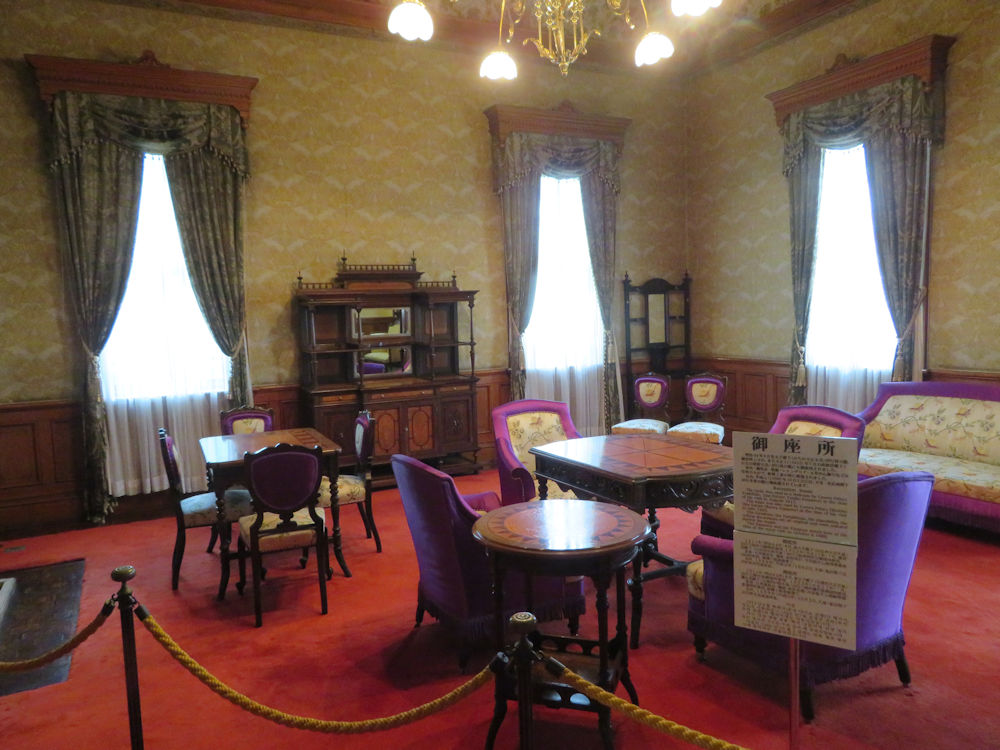
The residing room of the Taishou Emperor as crown prince in his royal visit to the magnificent old public hall in Motomachi. The furniture is original.
Hakodate is located on the eastern side of Oshima Peninsular the southernmost area of Hokkaido. In my studies to obtain certification as a national guide, I had learned that Sapporo can be characterized as a city developed by the government, Otaru by merchants and Hakodate by foreigners. Japan succumbed to requests from Western nations to end its isolation policy and open its ports in the middle of the nineteenth century. Hakodate was the earliest port to open followed by Yokohama and Nagasaki. allowing foreigners to reside and trade. Consulates were opened and Christian missionaries of various denomination founded churches in Hakodate. Hakodate flourished as an international city blending Japanese and Western culture. Until overtaken by Sapporo and Asahikawa in the first half of the twentieth century because of the decline of fishing, Hakodate was the largest city in Hokkaido. Population of Hakodate has been declining since the 1980s to its current level of 260,000. Recently Hakodate is promoting tourism, receiving five million tourists including five hundred thousand overseas visitors a year. Hakodate houses the only Important Preservation District for Groups of Historic Buildings in Hokkaido designated in 1989. I had never been to Hokkaido and chose Hakodate for my first visit in my task to rediscover Japan.
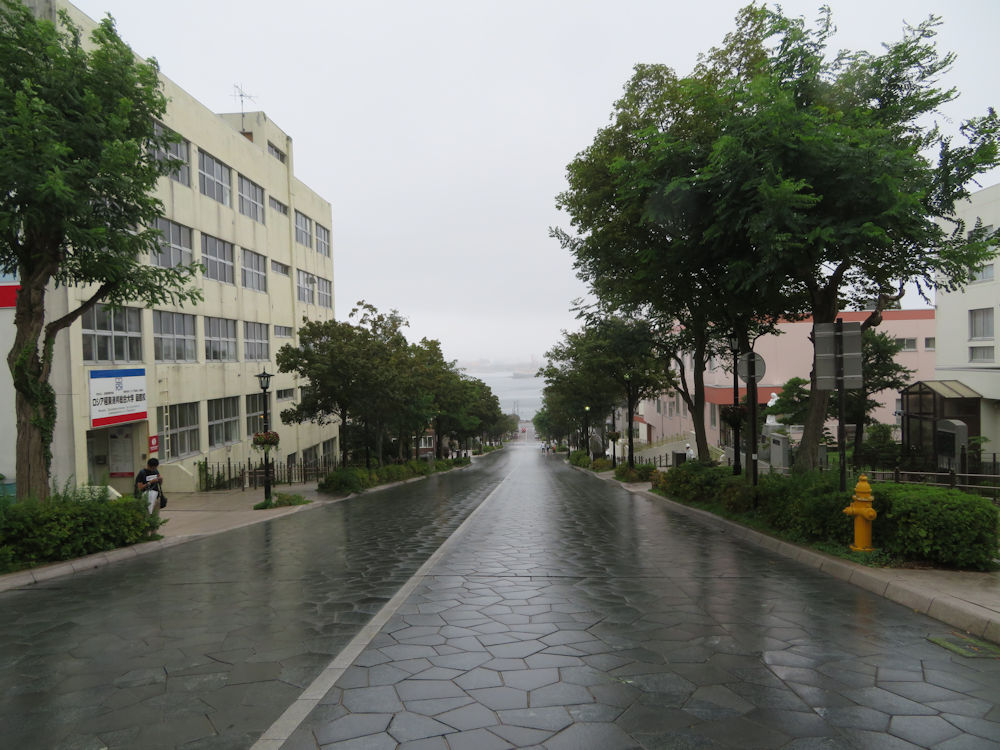
Looking down towards the bay from the top of Hachimansaka. Hakodate has many such wide slope roads to prevent the spreading of fire.
The Important Preservation area is composed of two districts, the Motomachi area between Juujigai and Suehirochou Hakodate tram stations and uphill towards Mount Hakodate housing many churches and buildings with a Japanese style first floor and a Western style second floor reflecting its unique international heritage, and the Kanamori red brick warehouse area North of Juujigai towards the seafront reflecting Hakodate’s history as a major port town. The other major tourist attraction sites are Goryoukaku, the pentagonal fort about four kilometers north west from central Hakodate which became the last battle site between the Meiji New Government and the last Tokugawa supporters and the famous night view of Hakodate City from the top of Mount Hakodate. We set out to visit as many sites as possible during our four days’ stay.
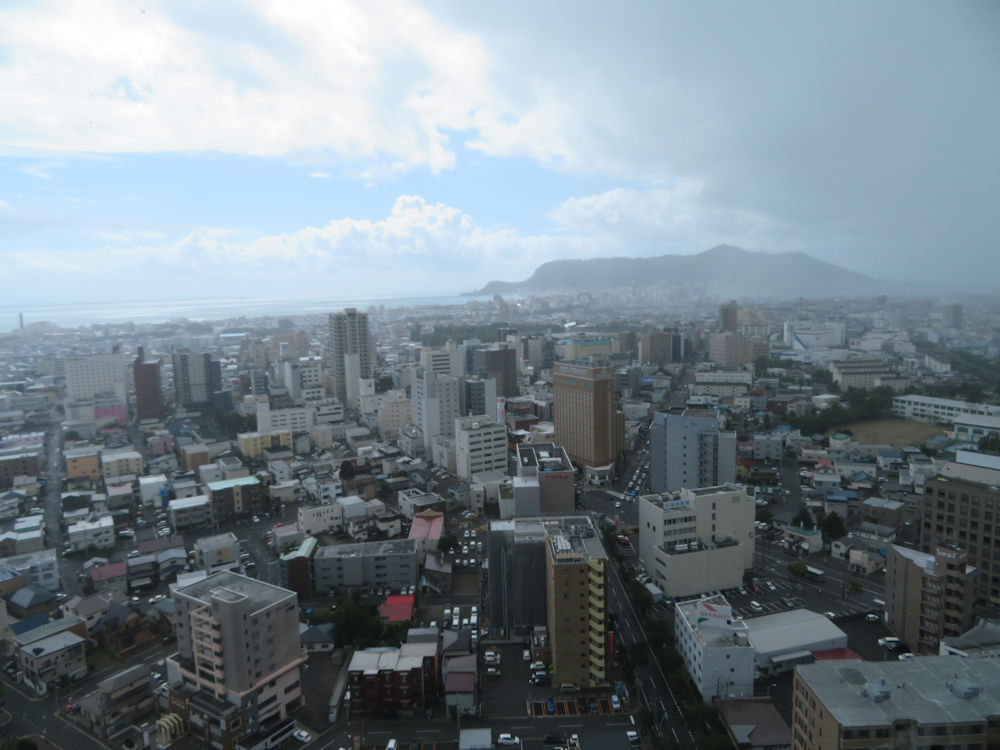
View of Hakodate City from the top of Goryoukaku Tower. Mount Hakodate in the far back.
The day after our arrival late evening in Hakodate, we wanted to have breakfast in the Hakodate Asaichi (morning market) area opposite JR Hakodate Station. Of the many asaichis held through Japan, the majority of the morning markets take the style of food and local goods stalls that open daily or on designated dates. I understand that Hakodate morning market started after WWII as a temporary stall market but evolved into a permanent market composed of over two hundred shops and restaurants as we see today.
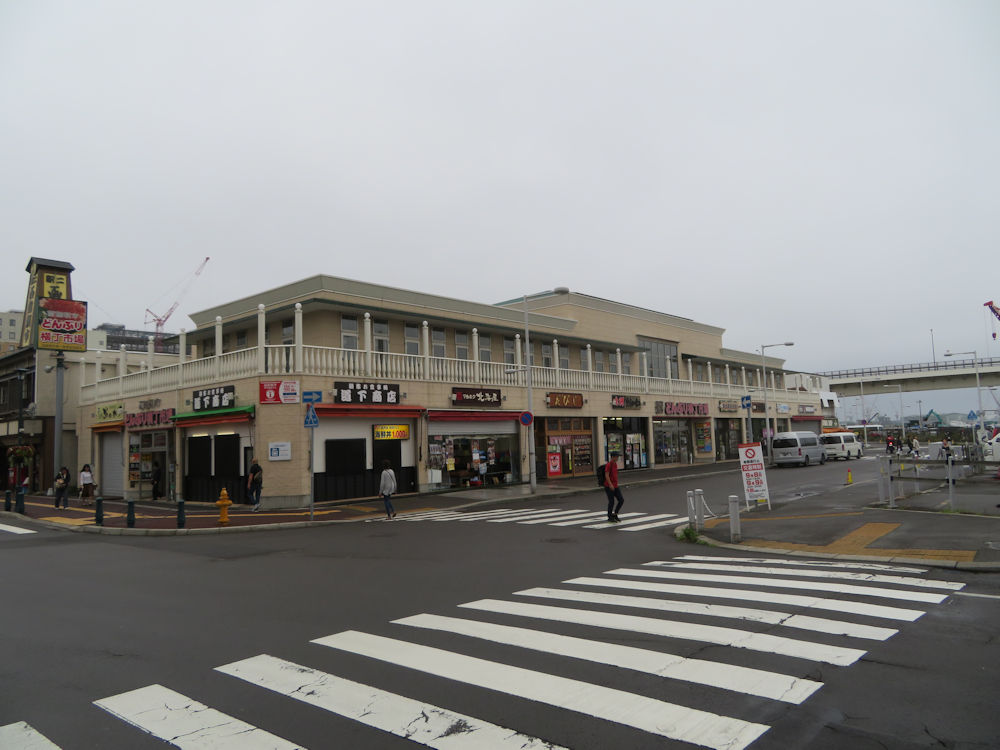
View of Hakodate Asaichi opposite JR Hakodate Station. With so many restaurants with similar menus it was difficult for me to decide where to eat.
With so many restaurants with similar menus it was difficult for me to decide where to eat. I finally settled for a restaurant in a building called Donburi Yokocho. The donburis (rice bowls) with plenty of sea urchin, salmon roe, scallops and crab meat are gorgeous but expensive. I chose this restaurant because they offered a modestly priced morning menu among other expensive dishes. I ordered hokke (atka mackerel) teishoku (set menu) offered at 890 yen. Hokkaido is famous for its hokke. There used to be abundant catch decades ago so hokke became an affordable fish for the Japanese, although nowadays much of the hokke are imported. Hokke is served grilled with grated radish and is much easier to eat because the fish do not have small bones like herring and the main bones can easily be separated from the meat. I was very pleased and satisfied with the hokke teishoku.

I ordered hokke (atka mackerel) teishoku (set menu) offered at 890 yen. Simple but delightful.
We then set out to explore the historic Motomachi district. Although guidebooks suggest a tour route from Juujigai, the west side of Motomachi, we thought it better to start from the other side from Suehirochou, as the history museums are located in the Suehirochou area and we make it a practice to visit the local history museums first to gain a better understanding of local history. We first visited Hoppou Minzoku Shiryoukan (City Museum of Northern Peoples). This building owned and managed by a trust related to Hakodate City was the former Hakodate Branch of the Bank of Japan. The building was built in 1926, expanded in 1954 and served as a bank until 1988. It is not part of the historic building designation. I understand the displays all related to the northern minority people, Ainu in particular was compiled by combining the collection of Hakodate City Museum and those of two scholars, Osamu Baba and Sakuzaemon Kodama. Although I knew of the Ainu as an indigenous people in Hokkaidou, I must admit my understanding is very shallow. So I will not talk much as one can easily find many reviews of the museum by non-Japanese people. I do know that a lot of preservation work of the Ainu culture has been made in recent years and that a national museum of Ainu Culture will be opened in Shiraoi in 2020. I will undertake to learn more in the coming years. In any event, at the moment this museum seems to be a good place to learn about Ainu heritage. At the reception I was offered a discount ticket to visit on top of this museum, the Literature Museum, the former British consulate and the old Public Hall of Hakodate Ward for 840 yen. Although I myself bought the combined ticket, it may be better if you paid individually as you may find that you would rather skip one or two of the tourist attractions.
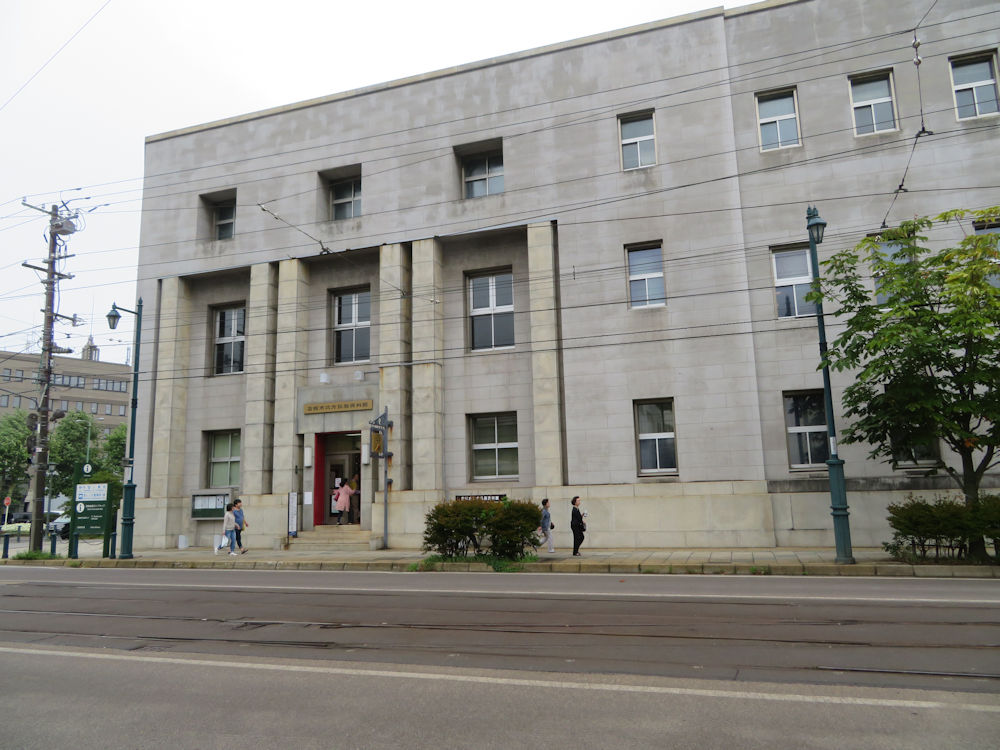
We first visited Hoppou Minzoku Shiryoukan (City Museum of Northern Peoples). This building owned and managed by a trust related to Hakodate City was the former Hakodate Branch of the Bank of Japan.
We exited the Hoppou Minzoku Shiryoukan and went left for about fifty meters
to Bungeikan (Literature Museum). The building housing the museum was built
in 1921 and was the Hakodate Branch of Dai-ichi Bank (now part of Mizuho
Bank) until 1964. The museum displays mementoes of writers, poets and journalists
related to Hakodate. A large section is allocated to Takuboku Ishikawa,
a genius poet who died young in 1912 at the age of twenty-six. Five years
before he died Takuboku stayed four months in Hakodate after leaving his
home village Shibutami in Iwate Prefecture. I understand that Takuboku
thought the brief stay in Hakodate as his happiest days and that his grave
is in Hakodate. The Takuboku displays were initially housed in the Hoppou
Minzoku Shiryoukan and transferred to the Literature Museum when it opened
in 1993. Although I appreciate Hakodate City being proud of its relation
with Takuboku, perhaps it may be not in line with the interests of tourists
wanting to know Hakodate’s international heritage.
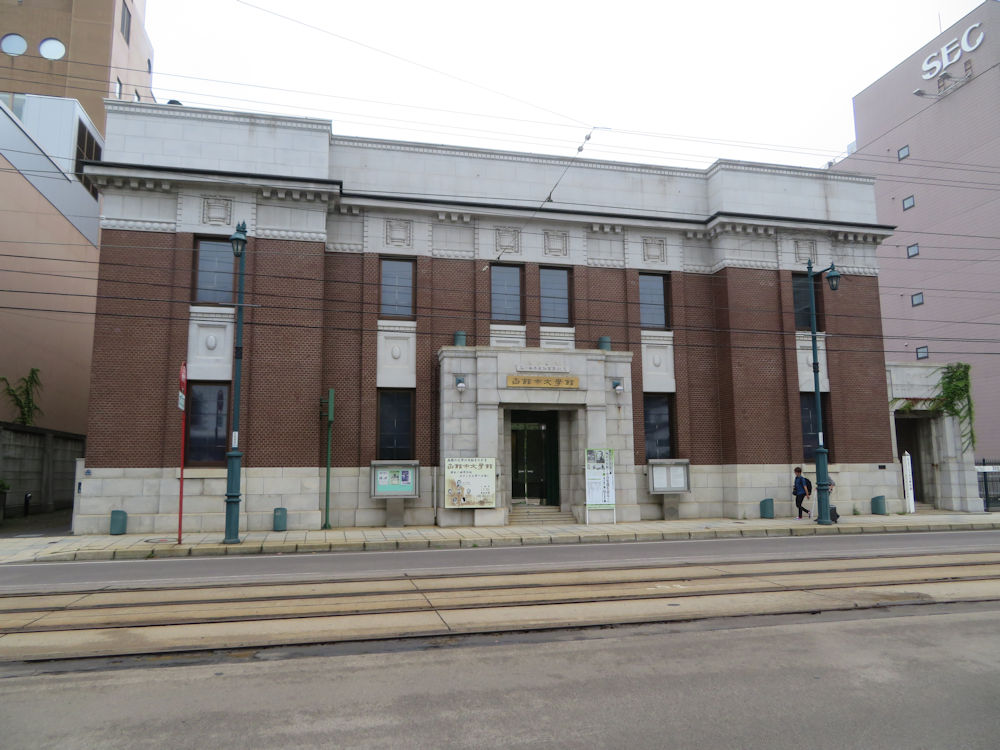
The building housing the literature museum was built in 1921 and was the Hakodate Branch of Dai-ichi Bank (now part of Mizuho Bank) until 1964.
We then visited the Local History Museum on the opposite side of the street. The museum is housed in a building built in 1880 and refurbished in 2000. The museum is managed by the City of Hakodate directly, not through a trust like Hoppou Minzoku Shiryoukan. The admission fee is a modest one hundred yen. This visit turned out to be much more interesting than the Literature Museum. A lady approached us and asked if we would like her to take us around to which we immediately said yes. We learned a lot. This building was a business called Kanamori Western Goods, which was not just importing western goods but also distributing innovative local products such as beer. She told us that the beer was sold at the equivalent of today’s fifteen hundred yen. Not many people could have afforded it she said. The building is quite fireproof because of its stone warehouse style being the reason it has survived through so many fires in Hakodate. On top of admiring the many ornaments and objects collected by Kumashirou Watanabe, the founder of the Kanamori business, it was interesting to learn for instance that eventually the Watanabe Family founded a department store opposite the museum that is now a hotel and concert hall. The department store later merged with another store to create the Boni-Maru department store close to Hakodate Station. Just browsing this museum is more than worth the admission fee.
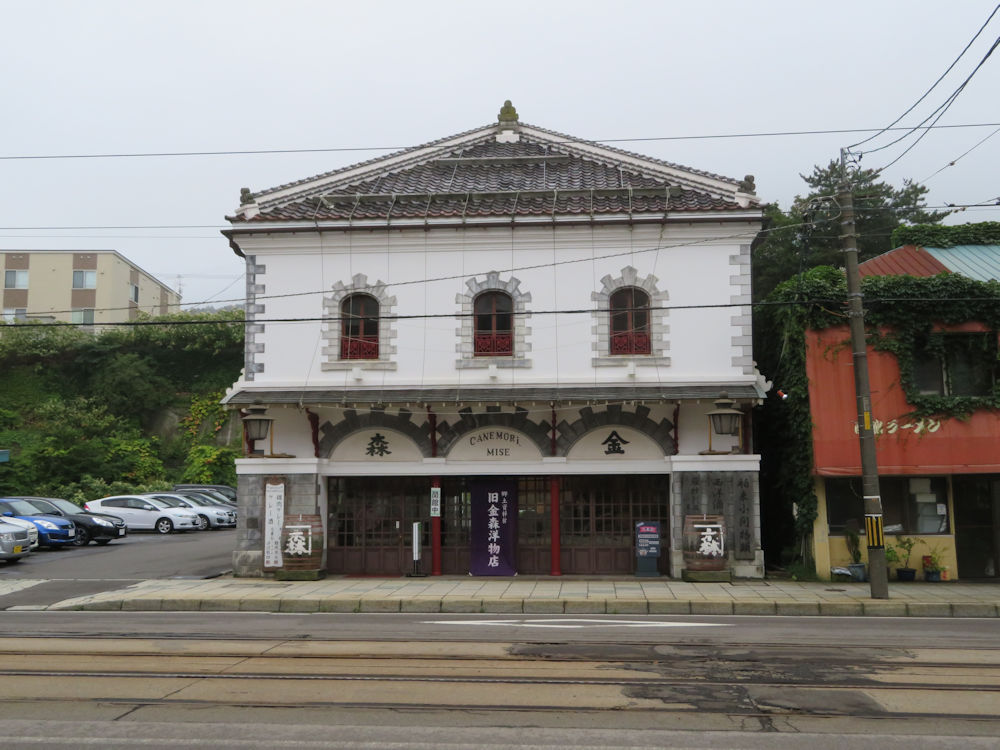
The Local History Museum is housed in a building built in 1880 and refurbished in 2000. Just browsing this museum is more than worth the admission fee.
We left the museum and went up Motoi-zaka about two hundred meters to reach the former British Consulate. This building built in 1913 served as the British Consulate until it was closed in 1934. It was later acquired by Hakodate City and became a premise of Hakodate City Hospital and in 1992 converted into a museum. It is a relatively small two story building, so it won’t take long to explore the consulate’s office and family rooms on the second floor from where you can command a good view of Hakodate Bay. There is a tea room on the ground floor where we enjoyed tea in a relaxing atmosphere. I guess this is an enjoyable place for the Japanese who are so fond of British gardens and afternoon teas, but perhaps for overseas visitors not that special. I learned that there were several consulates in Hakodate that all closed long before the British and I wondered why the British had maintained the consulate for such a long time as Hakodate is quite a local city and there wouldn’t have been that many British for the consulate to take care of.

I guess this is an enjoyable place for the Japanese who are so fond of British gardens and afternoon teas, but perhaps for overseas visitors not that special.
There are several slopes going up towards Mount Hakodate from the bayside. Motoizaka is the most eastern slope and is the widest together with Nijukkenzaka with a width of thirty six meters including the pedestrian sidewalk. The reason for the width was the prevention of spreading of fire, as Hakodate has experienced many large fires notably the fires in 1907, 1921 and 1934. Motomachi literally means old town, It is this area that the political, commercial and financial district of Hakodate was originally concentrated. Motoi means basis. Motoizaka is so called because at the bottom of the hill was a signpost that was used as a base for distances to and from Hakodate.
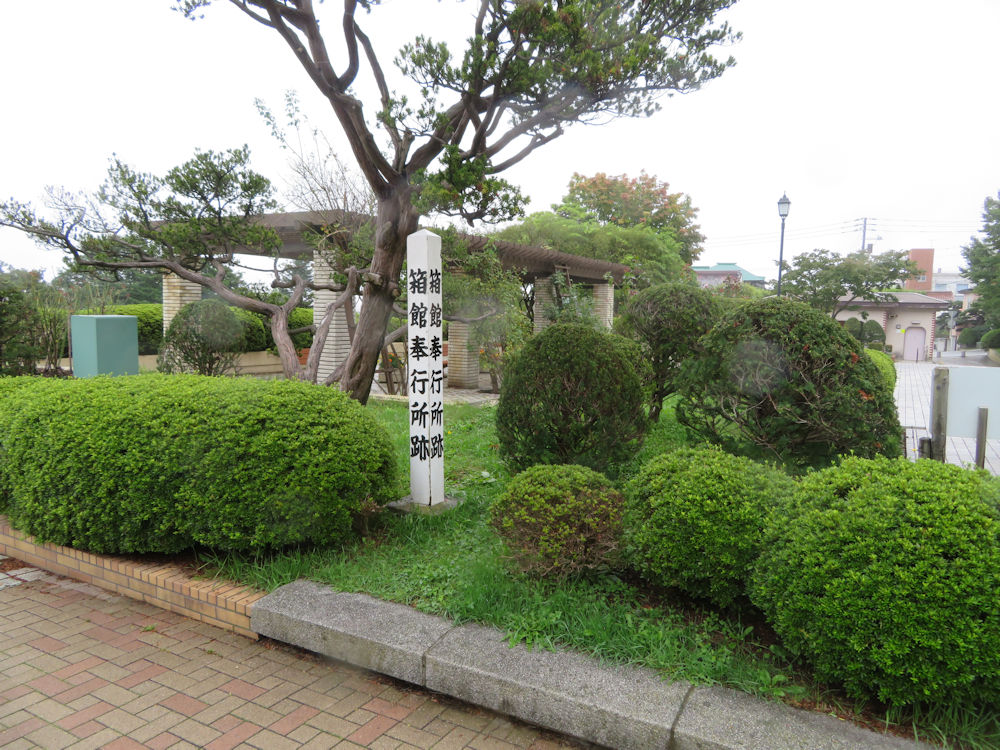
Site of Hakodate Bugyousho, Tokugawa shogunate's governmental office.
Further up from the Former British Consulate is Motomachi Park. This was where the Bugyousho of Hakodate Bugyou stood for the Tokugawa shogunate to govern Hakodate when the port was opened to foreign countries in the middle of the 19th century. You can command a good view of Hakodate Bay from this park, exactly the reason why the Tokugawa shogunate's governor was here to be on the lookout for intruders from the western countries.
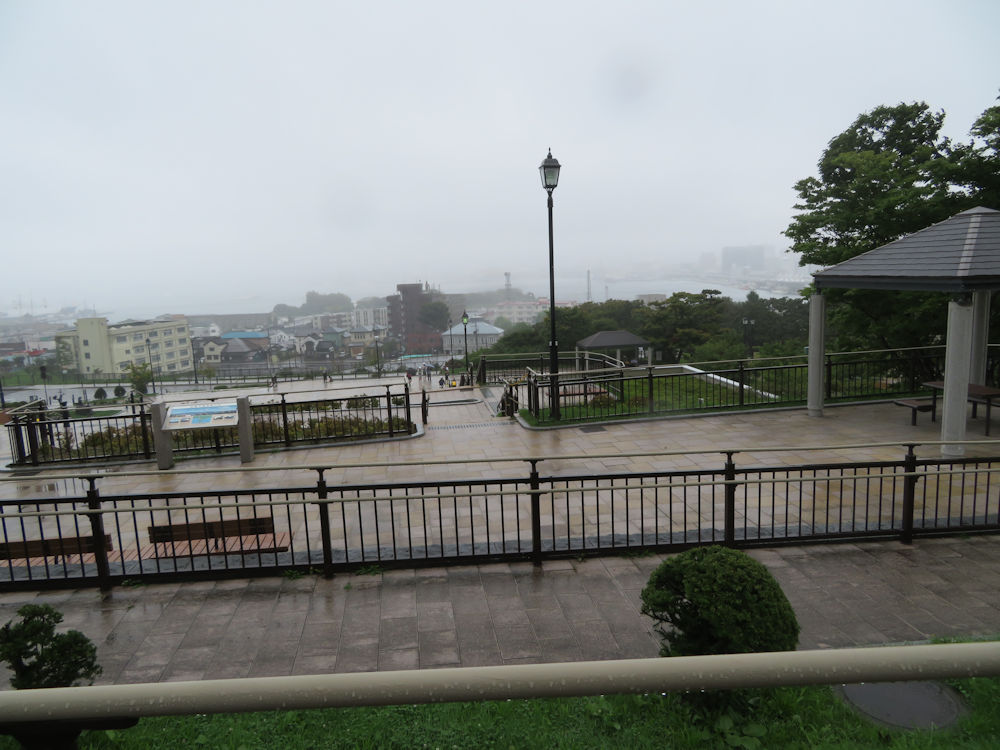
Looking down towards Hakodate Bay from further up of Motomachi Park.
The governmental branches of the governmental Meiji Government’s Hokkaidou Development Bureau (Hokkaidou Kaitakushi) as well as that of the Hokkaidou Prefectural Government (Hokkaidouchou) were set up in this area of Motomachi. The building of the former Hakodate branch of Hokkaidou Prefectural Government built in 1909 and refurbished in 1982 has now become the tourist information center. There were a couple of handy brochures inside. It's a good place to take a break while browsing the Motomachi area.
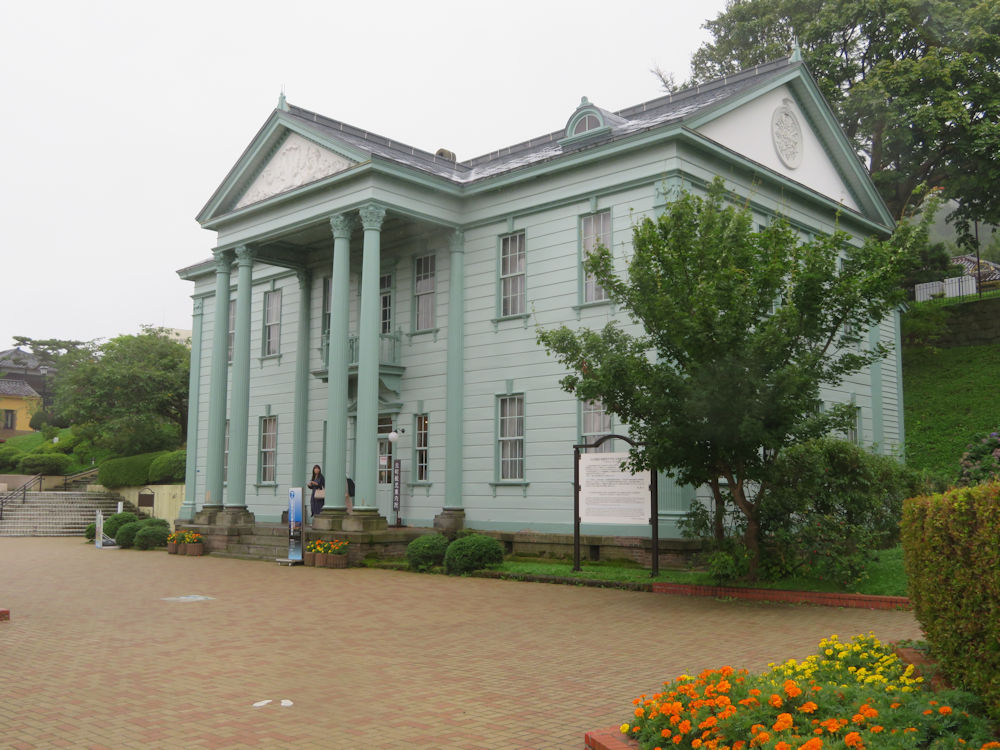
The building of the former Hakodate branch of Hokkaidou Prefectural Government built in 1909 and refurbished in 1982 has now become the tourist information center.
Above the park stands the grand Hakodate Ward Public Hall. This American colonial style two story building was constructed in 1910 after the former public hall was lost in the great fire of 1907. There’s a good English brochure available on the internet with a thorough description of the building. I was particularly interested in the second floor where you can see the bedroom, living room and waiting room used by the Taishou and Shouwa Emperors as crown princes and their servants. The ballroom which is now used for concerts is quite grand. From the public hall you can command a spectacular view of Hakodate Bay. Following the earthquake on September 6th, 2018, they have announced that the public hall will be closed for three years to undergo major refurbishment including fortifying resilience to earthquakes.
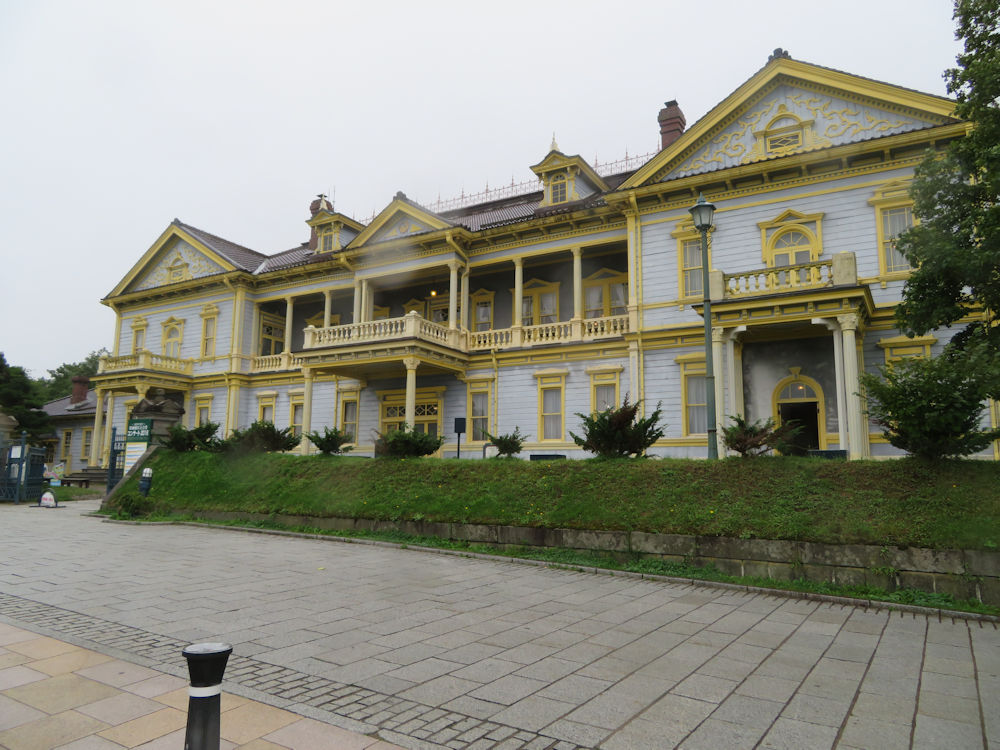
This American colonial style two story building was constructed in 1910 after the former public hall was lost in the great fire of 1907.
From the Public Hall we went through a road with housing designated as components of the important historical buildings designation. A classic feature of the buildings is a western colonial style second floor atop a Japanese style ground floor which is quite unique.
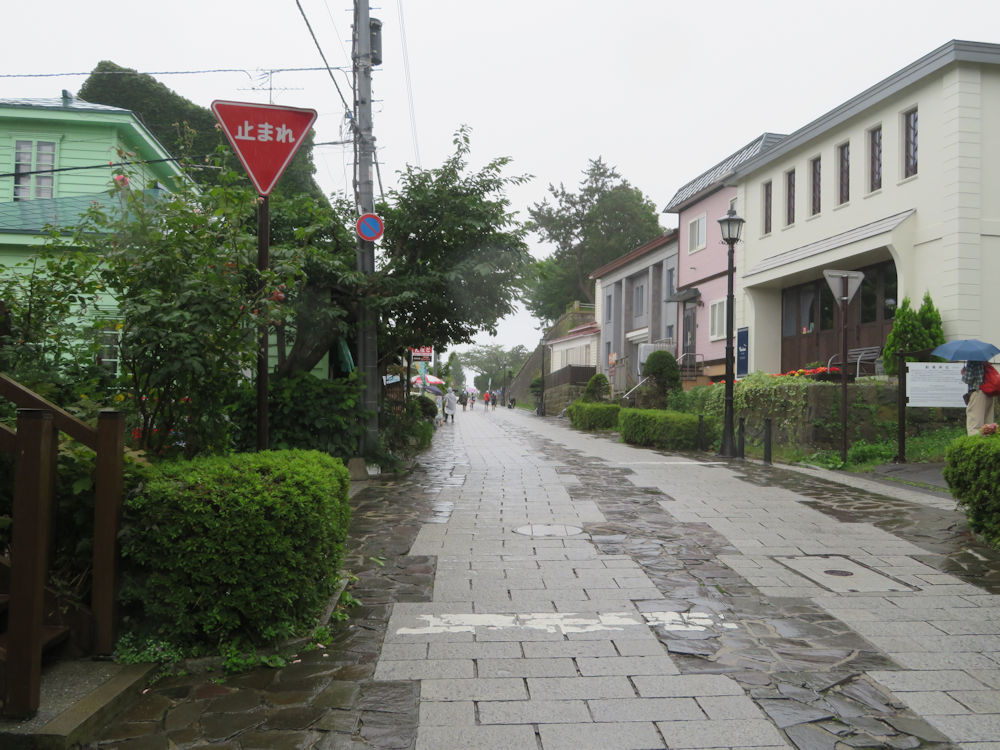
We went through a road with housing designated as components of the important historical buildings designation.
We passed the oldest Shinto Shrine in Hokkaidou, the Funatama Shrine on the right, and then another designated building, a kindergarten. The British Consulate was originally on this site until the building was lost in a fire in 1865. Here I need to explain a bit about the kindergarten. Merriman C. Harris, a Methodist missionary from USA arrived in Hakodate in 1874 and started a day school for boys and girls. M.C Harris is known for baptizing some of the most prominent Japanese Christians in the Meiji era including Kanzo Uchimura and Inazo Nitobe. His wife Flora made an appeal to the Methodists in the USA for support of Japanese education particularly for girls. Caroline Wright, wife of Indiana Governor and diplomat Joseph A. Wright, donated the money she had saved for her lost daughter, and in 1882 Caroline Wright Memorial School for girls was founded. The name of the school was changed three years later to Iai, meaning “remembrance of love.” A kindergarten was opened in 1895. The kindergarten was lost in the great fire of 1907 and the present building was built in 1913. It certainly is a beautiful western style building. It is situated next to the Orthodox Church and well worth stopping a moment to admire it.
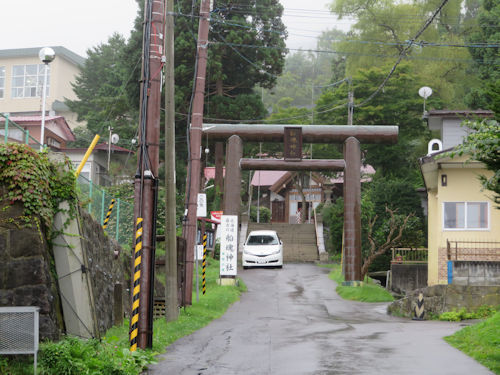
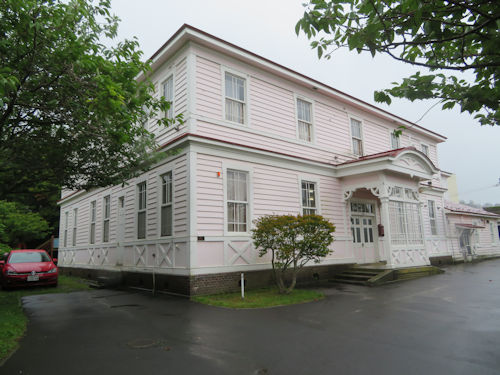
Funatama Shinto Shrine (left) and Iai Kindergarten (right).